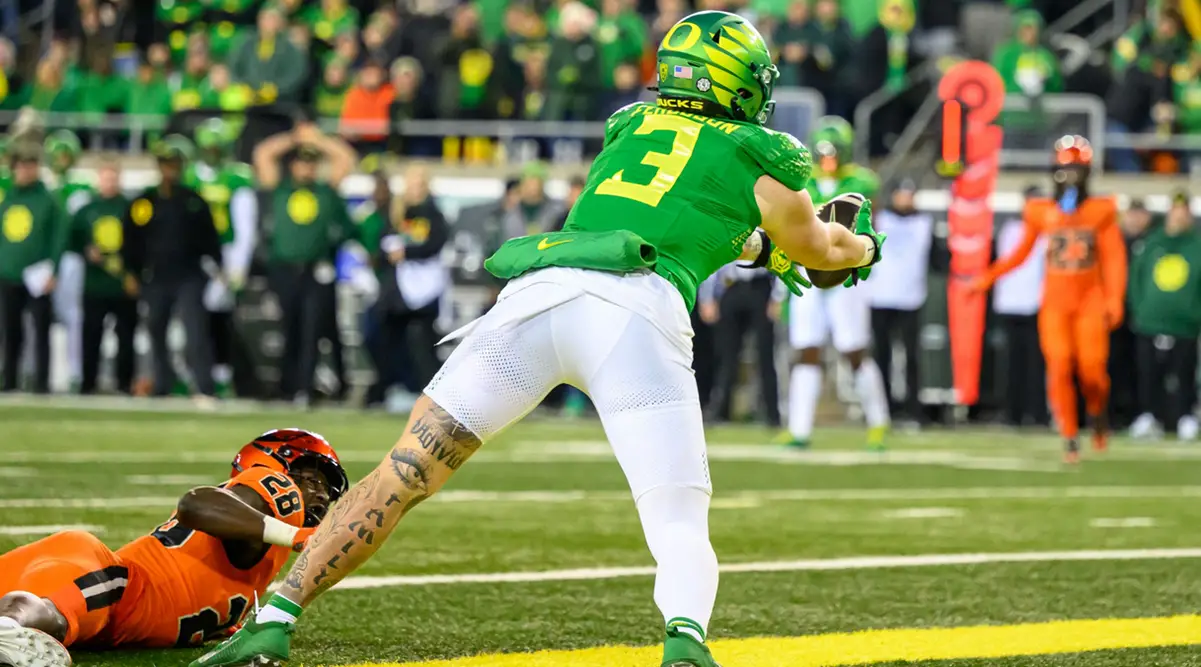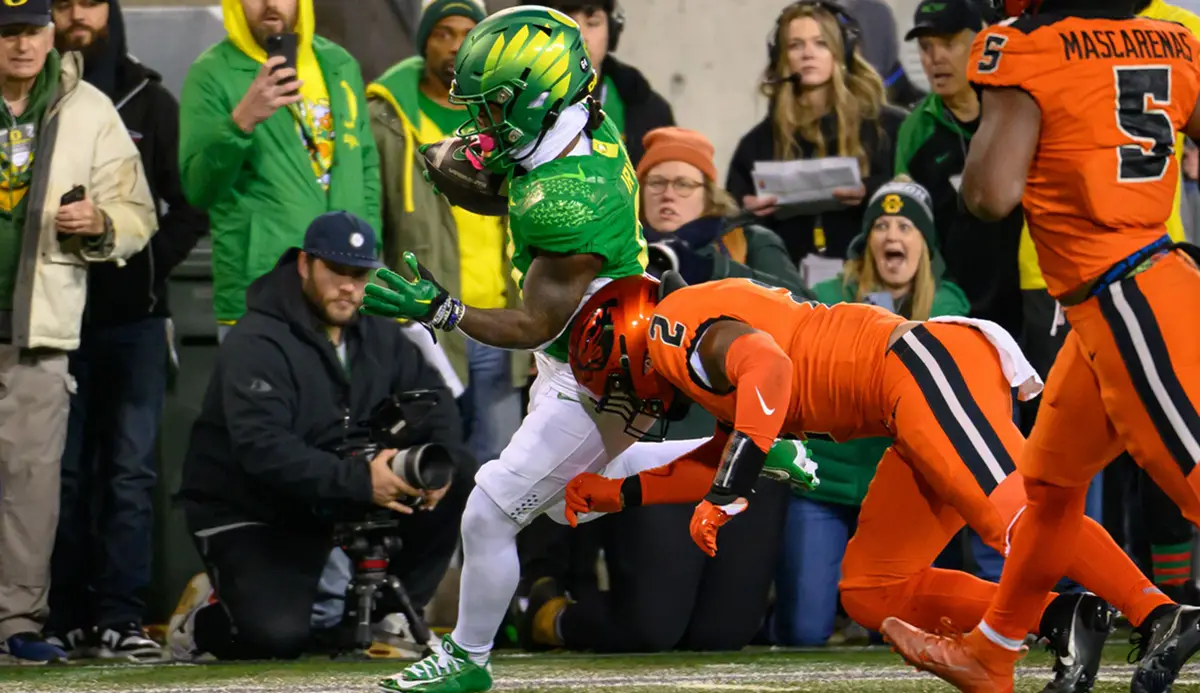Down the stretch this season, Oregon’s offense has been on an absolute tear. Heisman hopeful Bo Nix has put up ridiculous numbers. Perhaps the most telling is his 78-percent completion rate, which is the best in college football history. However, Oregon does have a strange problem in the red zone — and it isn’t the kicking game.
When the Ducks have first and goal from the 10-yard line, they have trouble punching it in for a score. If there are fewer than five yards then they will usually find their way to the end zone, but if they need 10 yards it’s a problem.
At 10 yards, the Ducks can’t power run the ball in easily, because the opposing defense is able to crowd the line of scrimmage effectively due to the short field. This is exactly what the Beavers did to Oregon with six minutes to play in the third quarter.
That series went like this:
- First down: run for one yard.
- Second down: run for two yards.
- Third down: incomplete pass.
- Fourth down field goal.

Oregon’s Tight Ends should be used more in these short field situations.
(Photo By Craig Strobeck)
When Oregon went to pass on third and goal from the seven, Nix felt some pressure and missed Tez Johnson. However, even if Johnson had caught the ball, there wasn’t enough separation between him and his defender for him to score. With a short field, the passing windows are smaller, because with no threat of a long pass, there are more defenders in a smaller area.
This problem goes beyond the game with Beavers. In fact, Oregon has had the problem for most of the season.
Against Washington State, Oregon’s first scoring drive had a similar set of downs. With first and goal from the 10, Oregon started with a false start penalty. So, first and goal from the 15. A run got Oregon to the nine-yard line. Then, after two incomplete passes, they had to settle for a field goal.
Something similar happened at the 15-yard line in the USC game. And against Arizona State in a similar situation, Nix threw to Terrance Ferguson for a touchdown that was called back due to offensive pass interference. Oregon again had to settle for a field goal attempt — which, by the way, they botched.
Will Stein has done an amazing job with Oregon’s offense this year, but this is one area that needs his attention. What plays can he go to in order to finish off drives when he is working with a short field? Settling for field goals in these situations probably won’t be good enough down the final stretch of the season.
There are plenty of ways that Stein can fix this problem. He could throw more often to tight ends. Tight ends are great for red zone situations, as they are bigger targets that can go up and get the ball over shorter defenders. Fade routes can be effective as well, so perhaps he could use them more often. In any case, the Ducks will need to figure something out soon.
The Ducks have the talent, but they need to plan around this part of the field, where it seems thta Duck scoring drives go to die.
David Marsh
Portland, Oregon
Top Photo By Craig Strobeck
 Bob Rodes, the FishDuck.com Volunteer editor for this article, is an IT analyst, software developer and amateur classical pianist in Manchester, Tennessee.
Bob Rodes, the FishDuck.com Volunteer editor for this article, is an IT analyst, software developer and amateur classical pianist in Manchester, Tennessee.
Related Articles:

David Marsh is a high school social studies teacher in Portland, Oregon. As a teacher he is known for telling puns to his students who sometimes laugh out of sympathy, and being both eccentric about history and the Ducks.
David graduated from the University of Oregon in 2012 with Majors in: Medieval Studies, Religious Studies, and Geography. David began following Ducks Football after being in a car accident in 2012; finding football something new and exciting to learn about during this difficult time in his life. Now, he cannot see life without Oregon football.

